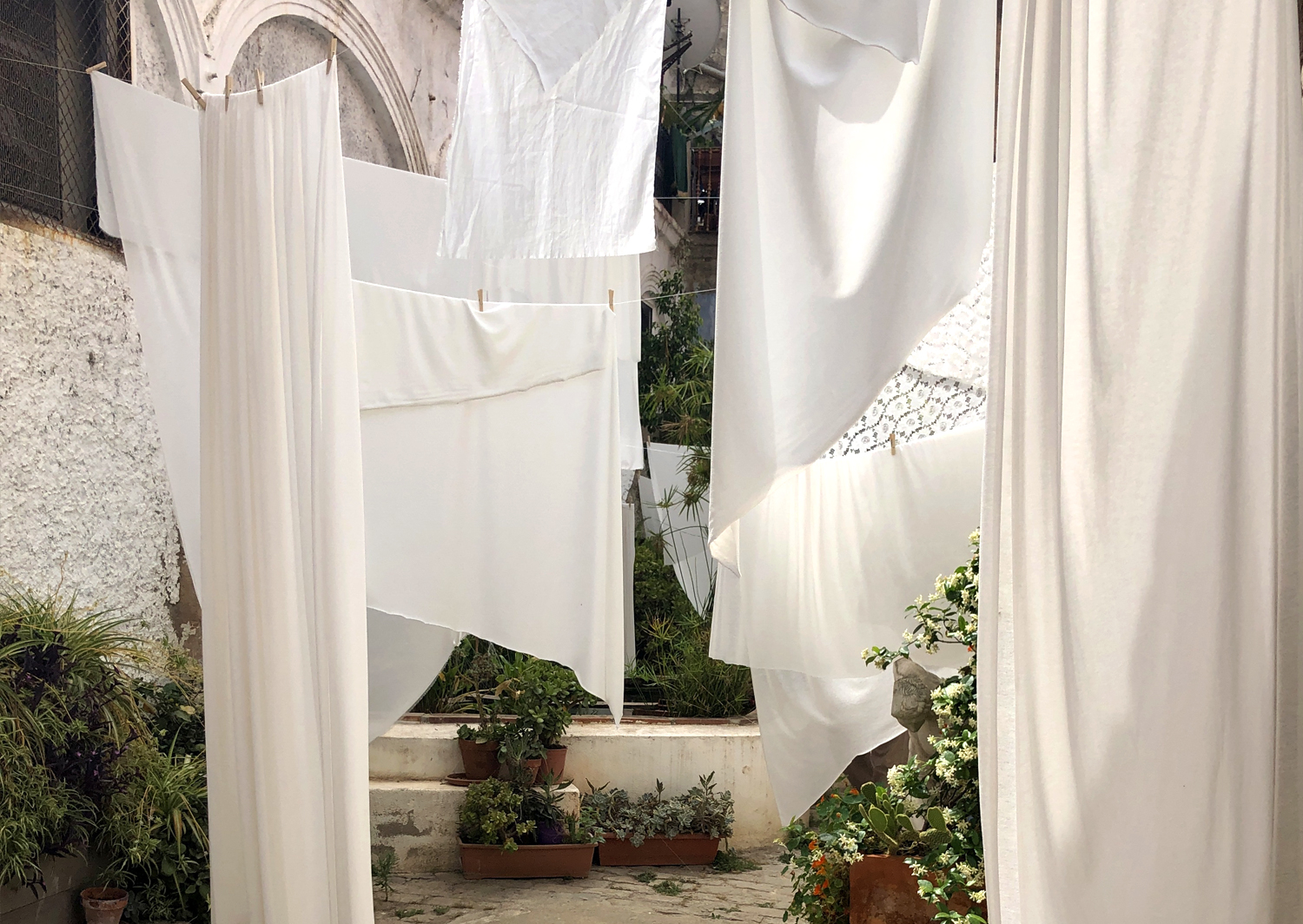


Logan B. Fields Cal Nicasi – A Calling Bath


Perhaps not many know that this plot of land is embedded in Spiritist history and today still hides cal Nicasi, the infamous spiritist center thought to have disappeared over 120 years ago.
 Logan B. Fields, A Calling Bath
Logan B. Fields, A Calling Bath
A Calling Bath was created out of an urge to reconcile the persecution of characters like Unceti Maria Nicasi and the Spiritist community, whilst addressing the limits of their methodology. To clear a space for a non-dogmatic voice to fill (a voice of abstraction).
First, I told the story of A Table Moved. The narrator explains how after a friend’s death, a strange thing happened where her table moved. She wants it to mean something that she can recognize and understand, but knows she cannot assign a rationalization to it. She recognizes that the event was significant, but that it cannot be fully understood. She accepts the autonomous voice of a table and sees beauty.
Second, I performed A Calling Bath. The process included the following steps: I formed a vessel by stitching a ‘ghost costume’ designed to fit the imagined presence of Unceti Maria Nicasi. I collected grass, shrub, flower from the grounds from where cal Nicasi would have been located. These included a four leaf manyseed, sowthistle, spreading pellitory, sheep sorrel, dandelion, henbit dead nettle, cleavers, herb robert, and wall lettuce. I imbued the waters by soaking the collected shrubs to create a bath fortified with the plant’s qualities – a bath much like one Nicasi would have prescribed. I cleansed the vessel by washing the ghost costume in the enriched bath, thus performing an act of clearing out for the ghost costume to be filled.
HISTORICAL CONTEXT
Our story starts in 1857 when French educator, translator and author Hippolyte Léon Denizard Rivail had the experience of witnessing a “table turn” due to its possession by spirits. Soon after he wrote The Book of Spirits (Le Livre des Esprits) under the name of Allan Kardec. This book explained and codified the science of spirits and their connection to the bodily world. It was translated into Spanish in 1860 and was banned by the authorities in collaboration with the Church one year later. In 1861 over 300 copies of the book were confiscated and burnt due the “perversion of morals” they incited. Paradoxically, the fire caused many people to hear about spiritualism for the first time.
At about the same time we learn about Unceti Maria Nicasi, a teacher from a school in Carrer de Sants who claimed to be able to cure children from diseases doctors failed to. As the word of this curandero (healer) spread, so did his fame. He had followers traveling from Sabadell and Lleida to Sants to be cured from their ailments. Hence the old saying of “Esguerrats cap a Sants” (“Crippled towards Sants”). As his reputation escalated he became known as the “Prophet” and “el curandero de Sants” (“the Healer of Sants”).
In a mass invocation in 1870 he convened mutilated, lame, blind and sick people to come and be healed by his magic water and magnetised baths. He also gave instructions to dig wells and pilgrimage to rivers in the name of healing. His unorthodox practices caused quite a scene during the time, resulting in Nicasi being arrested, probably to prevent public disorder. Since then we do not know of any more public displays of his healing powers. Probably with his spirit somehow broken by the authorities, he continued his “healing sessions” discreetly with private patrons.
Although the story of Unceti Maria Nicasi (or Nicasi González depending on the source), has been forgotten by most, cal Nicasi – the Spiritist center his followers built for him – seems to have survived in its original form and location hidden by the modifications of time.
Source texts: documents d’arxiu de l’Arxiu Municipal Districte Sants-Montjuïc, Arxiu Municipal Contemporani de Barcelona, Agus Giralt “Esperits de Sants” y “Esguerrats cap a Sants”, La revolució espiritista escrita per Andreu Navarra en El Nacional, “El curandero de Sans” de Carmen Olivar de l’informatiu, “Curanderos i sanadors” des del blog Misteris de Sants, Barcelona Memory “El Espiritismo en Barcelona”, “150 anys parlant amb els esperits” El País reportatge, 03 nov 2011
Source images from the archive: Contemporary Municipal Archive of Barcelona (AMCB) and Municipal Archive of the Sants-Montjuïc District (AMDS)
DISCOVER THE WORKS ONLINE THROUGH A ROUTE ON YOUR DEVICE
For more information on the other works of art participating in the exhibition, see Related Exhibitions
Compartir